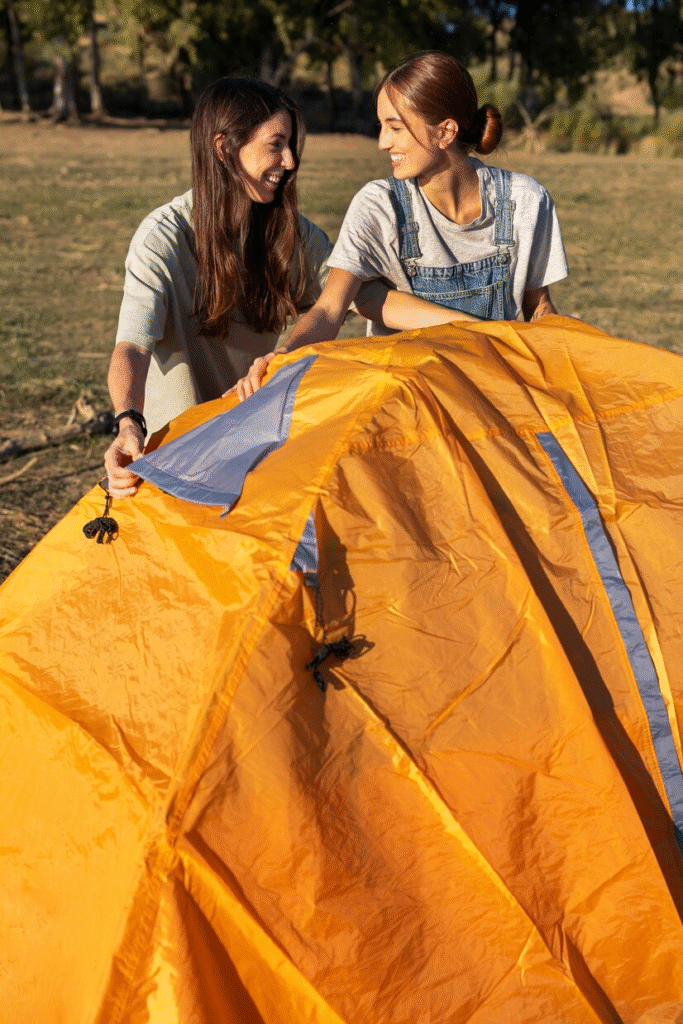When buying a tarp, it’s not just the size or color that matters. What really determines performance—especially over time—are the specs behind the product. Three of the most important specifications to understand are GSM (grams per square meter), weave count, and coating. These directly impact how strong, durable, and weather-resistant a tarp will be for your specific application.
Whether you are covering equipment, creating temporary shelter, or ordering tarps in bulk for resale, knowing how to read these specs can mean the difference between a tarp that lasts and one that fails early.
GSM: Weight Equals Strength
GSM (Grams per Square Meter) is a measurement of fabric density. In simple terms, it’s the weight of the tarp material per square meter. The higher the GSM, the thicker and heavier the tarp. That usually translates to greater durability and better protection from wind, UV rays, and tearing.
Here’s a basic breakdown:
- 90–120 GSM: Lightweight tarps suitable for short-term cover or indoor use.
- 120–200 GSM: Medium-duty tarps used for general outdoor protection like temporary roofing or ground cover.
- 200+ GSM: Heavy-duty tarps meant for long-term exposure, truck covers, and industrial environments.
GSM is especially useful when comparing poly tarps. Many people assume thickness in millimeters tells the whole story, but two tarps with the same thickness can have different GSM ratings depending on their material density.

Weave Count: The Hidden Factor in Tarp Strength
Another crucial spec is weave count, often expressed as something like 8×8 or 14×14. This refers to the number of threads per square inch—both horizontally (warp) and vertically (weft). Higher numbers mean a tighter weave, which enhances tear resistance, water resistance, and overall lifespan.
Here’s what different weave counts generally indicate:
- 8×8 or 10×10: Common in economy-grade tarps. They’re flexible and inexpensive but not built for high-stress conditions.
- 12×12 to 14×14: Considered mid- to high-strength tarps. These are reliable for most commercial, industrial, and residential uses.
- 16×16 or higher: Found in premium tarps designed for high-impact environments and long-term outdoor exposure.
It’s not just the number of threads—it’s how well those threads hold together under strain. A tight weave helps prevent tearing from spreading, even if the tarp gets punctured.
If you’re browsing options at a Tarpaulin shop, be sure to compare weave count alongside GSM. A tarp with a good GSM but a low weave count might not hold up the way you expect under repeated tension or strong winds.
Coating: What Keeps the Elements Out
While GSM and weave speak to the fabric itself, coating refers to what’s applied on top to enhance performance. Most poly tarps, for example, are laminated with polyethylene on both sides. Canvas tarps are often treated with wax or oil for water resistance, and vinyl tarps are coated with PVC for excellent waterproofing and durability.
Each coating type affects the tarp’s resistance to water, mildew, UV damage, and abrasions:
- Polyethylene Coating: Used in poly tarps. Offers waterproofing, flexibility, and UV protection. Ideal for general use.
- PVC Coating: Found in vinyl tarps. Highly durable and waterproof. Performs well in demanding conditions like construction and transportation.
- Wax/Oil Treatment: Common in canvas tarps. Water-resistant but breathable. Suitable for covering items that need ventilation.
The quality of the coating also determines how long the tarp stays effective. A tarp may look fine after months in the sun, but if the coating has degraded, water may start seeping through or the fabric may crack under pressure.
Matching Specs to Purpose
Choosing the right tarp comes down to matching GSM, weave, and coating to the actual environment where the tarp will be used.
- For temporary shade or light-duty cover, a lower GSM with a basic weave will work fine.
- For construction, shipping, or agricultural applications, a high GSM and tight weave with UV-stable coating is a better fit.
- If you’re ordering for multiple environments, consider a versatile tarp that balances all three specs without overcommitting on cost.
Specifications aren’t just for engineers or bulk buyers. They’re for anyone who wants their tarp to perform reliably, whether for a single event or long-term use.
Final Takeaway
Getting tarp specs right—GSM, weave, and coating—makes all the difference when it comes to long-term performance. The right tarp isn’t just about coverage; it’s about selecting a material that holds up under real-world conditions without constant replacements.
For those looking for a supplier with a deep understanding of tarp construction and a wide range of heavy-duty options, Tarps Plus is a trusted source. With decades of industry experience, they offer poly, canvas, and vinyl tarps built for demanding applications—and back it with knowledgeable support.
Have questions or need help finding the right fit? Call 1-512-686-2302 to speak with their product experts who can help.
